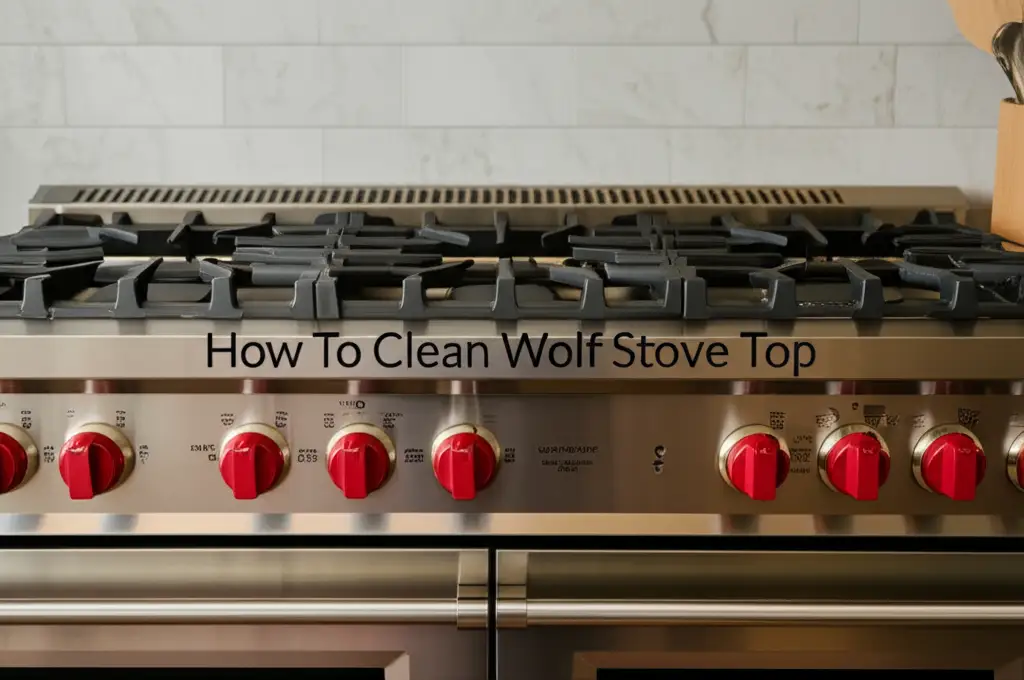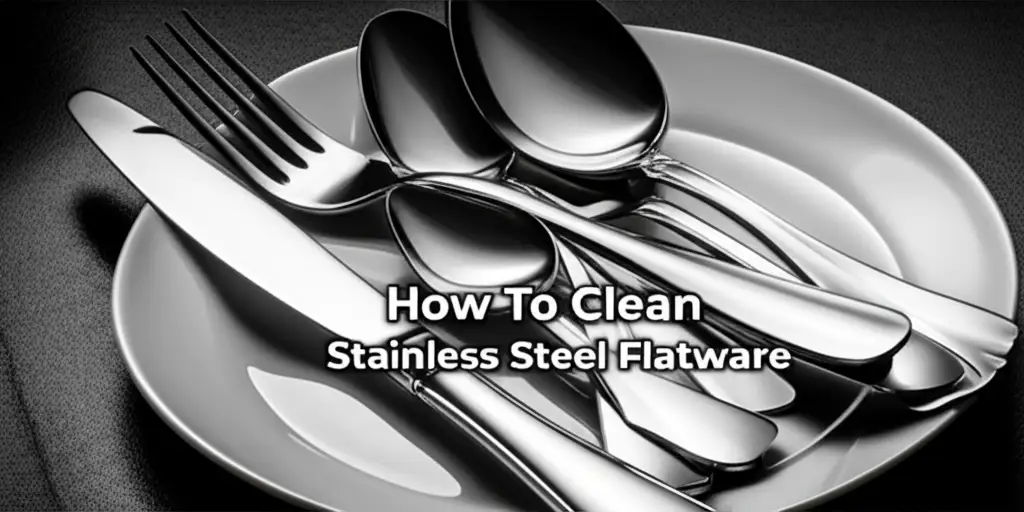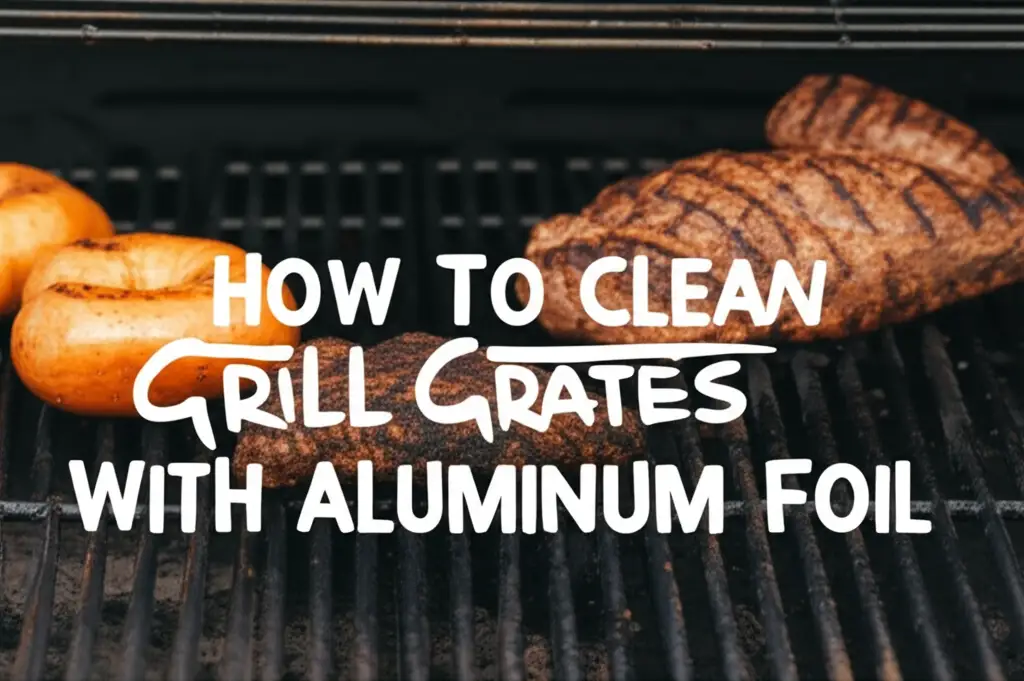· Home Cleaning · 10 min read
How To Clean Wolf Stove Top

How To Clean Your Wolf Stove Top Perfectly
A Wolf stove is more than just a cooking appliance; it is an investment. It elevates your kitchen’s style and performance. Maintaining its pristine appearance is important. Proper cleaning ensures its longevity and keeps it looking like new.
Knowing how to clean Wolf stove top surfaces correctly protects your investment. You need to use the right methods and products. This guide will walk you through everything. We will cover daily cleaning, deep cleaning components, and tackling tough spills. You will learn how to keep your Wolf stove top shining.
Takeaway
- Understand Materials: Identify your Wolf stove’s surfaces (stainless steel, cast iron, porcelain enamel).
- Daily Wipes: Clean minor spills immediately with gentle soap and water.
- Deep Clean Components: Remove and soak grates and burner caps regularly.
- Tackle Tough Stains: Use baking soda paste or specialized cleaners for stubborn messes.
- Use Proper Tools: Always use soft cloths and non-abrasive sponges.
- Prevent Future Messes: Implement splatter guards and clean as you cook.
To clean a Wolf stove top, first remove grates and burner components. Clean them separately with warm, soapy water or a baking soda paste. Then, wipe down the main surface with a damp cloth and mild dish soap. Rinse and dry thoroughly with a microfiber cloth to prevent streaks. Always refer to your Wolf owner’s manual for specific product recommendations.
Understanding Your Wolf Stove Top Materials
Wolf stove tops are known for their quality construction. They often feature different materials. Understanding these materials is the first step to proper cleaning. Each material needs a specific cleaning approach.
Most Wolf ranges have heavy-duty cast iron grates. They also have sealed burners. The main stove top surface is typically stainless steel or a durable porcelain enamel. Knowing what your specific model has helps you choose the right cleaning products. It also helps you use the right tools. Using the wrong cleaner can damage the finish.
Cast iron grates require gentle care to prevent rust. Stainless steel needs non-abrasive cleaners to avoid scratches and streaks. Porcelain enamel is durable but can chip if hit hard. Always check your stove’s user manual for exact material specifications. This ensures you apply the best cleaning strategy.
Daily Care: Keeping Your Wolf Stove Top Pristine
Regular cleaning is key to maintaining your Wolf stove top. Cleaning after each use prevents food from hardening. It makes deep cleaning much easier later on. This quick routine keeps your kitchen looking tidy.
Start by letting the stove top cool completely. Use a soft, damp cloth with a few drops of mild dish soap. Gently wipe away any spills or food splatters. For stainless steel surfaces, always wipe in the direction of the grain. This prevents streaking and tiny scratches.
Rinse your cloth and wipe again to remove any soap residue. Finally, dry the surface thoroughly with a clean microfiber cloth. This step is important for preventing water spots. It keeps your Wolf stove top sparkling.
Deep Cleaning Wolf Stove Top Grates and Burners
Deep cleaning involves more than just wiping surfaces. Your Wolf stove’s grates and burners need special attention. These parts collect grease and burnt-on food. Regular deep cleaning ensures they work properly and look good.
First, remove all grates and burner caps from the stove top. Many Wolf stove grates are made of cast iron. You can soak these heavy grates in a sink filled with warm, soapy water. For stubborn grime, create a paste using baking soda and a little water. Apply the paste to the grates and let it sit for 15-20 minutes. Then, scrub with a non-abrasive brush or sponge. Rinse them thoroughly and dry them completely to prevent rust. You can find more detailed instructions on how to clean cast iron stove grates.
For the burner caps and heads, gently wipe them with a damp cloth and mild soap. Avoid getting water into the igniter holes. Do not submerge the actual burner heads themselves if they contain electrical components. For comprehensive tips on cleaning these specific components, refer to guides on how to clean burners on gas stove. If your grates are dishwasher safe, that can simplify the process, as outlined in guides like how to clean gas stove grates in dishwasher. After cleaning, ensure all parts are completely dry before putting them back. This prevents moisture damage and ensures proper ignition.
Tackling Stubborn Spills and Burnt-On Food (Specialized Cleaning)
Sometimes, spills happen, and food gets burnt onto the stove top. These stubborn messes need more than just a quick wipe. They require targeted cleaning methods. Dealing with them quickly prevents permanent damage.
For sticky, burnt-on food, let the area cool down completely. You can make a thick paste with baking soda and a small amount of water. Apply this paste directly onto the stain. Let it sit for at least 30 minutes, or even a few hours for really tough spots. The baking soda helps to lift and break down the grime.
After letting it sit, gently scrub the area with a soft sponge or cloth. For particularly stubborn burnt marks, a plastic scraper can be used on certain surfaces, but always check your Wolf manual first. Avoid abrasive scrubbers that can scratch the finish. If you have had incidents like spills, learning how to clean burnt milk from stove can be helpful. For general burnt marks, specific methods on how to clean burn marks off stove might also provide useful insights. Rinse the area with a damp cloth and dry thoroughly.
Restoring Shine: Cleaning Stainless Steel and Porcelain Enamel
Wolf stove tops often feature beautiful stainless steel or porcelain enamel surfaces. These materials need specific care to maintain their shine. Incorrect cleaning can lead to streaks or damage. Let’s make your stove top gleam.
For stainless steel, the key is to clean in the direction of the grain. Use a mild stainless steel cleaner or a solution of warm water and a small amount of dish soap. Apply it with a soft microfiber cloth. Wipe gently, following the natural lines of the steel. This method helps to avoid visible streaks.
After cleaning, use a dry, clean microfiber cloth to buff the surface. This removes any residue and brings out the shine. For porcelain enamel surfaces, use a non-abrasive cleaner. A mixture of baking soda and water works well. Gently wipe the surface with a soft sponge. Rinse with a damp cloth and dry thoroughly. Avoid harsh chemicals or abrasive scrubbers on both surfaces. These can dull the finish or cause scratches.
Essential Tools and Safe Cleaning Solutions for Your Wolf Stove Top
Using the right tools and cleaning solutions is crucial for your Wolf stove top. Wrong products can cause damage. We want to clean effectively, but also safely. Always gather your supplies before you start.
Here is a list of recommended tools:
- Soft Microfiber Cloths: These are gentle and lint-free.
- Non-Abrasive Sponges: They scrub without scratching.
- Soft Bristle Brush: Great for scrubbing grates without damage.
- Spray Bottle: Handy for water or diluted cleaning solutions.
- Plastic Scraper (optional): Only for specific, very tough spots, if allowed by your manual.
For cleaning solutions, prioritize mild options:
- Mild Dish Soap: Good for daily wiping and general cleaning.
- Baking Soda: Excellent for making pastes to tackle burnt-on food.
- White Vinegar: Can be used diluted for streak-free rinsing on some surfaces (always test first).
- Wolf-Approved Cleaners: Check your owner’s manual for specific product recommendations. These are formulated for your appliance.
Always avoid harsh chemicals like oven cleaners, abrasive powders, or steel wool. These can permanently damage the finish of your Wolf stove top. Reading labels carefully ensures product compatibility.
Preventative Measures for a Cleaner Wolf Stove Top
Prevention is always easier than intense cleaning. Simple habits can keep your Wolf stove top cleaner for longer. Incorporating these tips into your cooking routine saves time and effort. You can enjoy a spotless stove with less work.
One good practice is to wipe up spills immediately. Fresh spills are much easier to clean than dried-on messes. Keep a damp cloth handy while you cook. This allows for quick cleanup. You can also use splatter guards or larger pots when cooking oily or saucy dishes. These create a barrier. They protect your stove top from splatters.
Consider a routine cleaning schedule. A quick wipe down after each meal keeps daily grime from building up. A deeper clean once a week or every two weeks keeps your grates and burners in top condition. Proper ventilation also helps. Good airflow reduces grease buildup on surfaces. These simple steps make maintaining your Wolf stove top much simpler.
FAQ Section
Q: How often should I clean my Wolf stove top? A: You should wipe down your Wolf stove top after every use. This removes fresh spills. For a deeper clean of grates and burner components, aim for once a week or every two weeks, depending on your cooking frequency. Regular cleaning prevents stubborn buildup.
Q: Can I use oven cleaner on my Wolf stove top? A: No, you should not use oven cleaner on your Wolf stove top. Oven cleaners contain harsh chemicals. These can damage the specialized finishes on stainless steel, porcelain enamel, and cast iron. Always use mild, non-abrasive cleaners specifically designed for stove tops or approved by Wolf.
Q: What causes white marks on my Wolf stove top? A: White marks on your Wolf stove top are often caused by hard water spots or mineral deposits. These occur when water evaporates and leaves minerals behind. To prevent them, always dry your stove top thoroughly after cleaning. You can also use a diluted vinegar solution for removal.
Q: How do I clean the igniters on my Wolf gas stove? A: Clean the igniters carefully. First, ensure the stove is off and cool. Use a dry, soft brush or an old toothbrush to gently remove any debris around the igniter. Avoid using water or harsh chemicals directly on them. For more details, consult a guide on how to clean igniter on gas stove.
Q: Is vinegar safe for Wolf stove tops? A: Vinegar can be safe for some parts of a Wolf stove top when diluted. It is good for cutting grease and leaving a streak-free shine on stainless steel. However, avoid using concentrated vinegar on cast iron. Always test a small, hidden area first to ensure it does not cause any discoloration or damage.
Q: How do I season cast iron grates after cleaning? A: After cleaning cast iron grates, dry them completely. Apply a very thin layer of vegetable oil or flaxseed oil. Use a paper towel to wipe off any excess. Then, place them in a cool oven and gradually heat to about 350-400°F for an hour. Let them cool in the oven. This helps maintain their non-stick properties and prevents rust.
Conclusion
Keeping your Wolf stove top clean is a smart decision. It goes beyond just looks. Regular and proper cleaning preserves its beauty and ensures its top performance for years. You have learned about understanding materials, daily care, and deep cleaning specific components. We also covered tackling stubborn stains and using the right tools.
By following these guidelines on how to clean Wolf stove top surfaces, you protect your kitchen’s centerpiece. Implement these simple steps into your routine. You will enjoy a gleaming appliance that looks and performs like new. A clean stove makes cooking more enjoyable. It also adds to your kitchen’s overall appeal.




